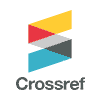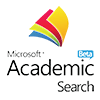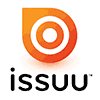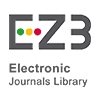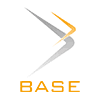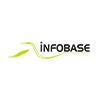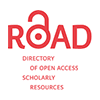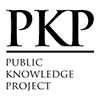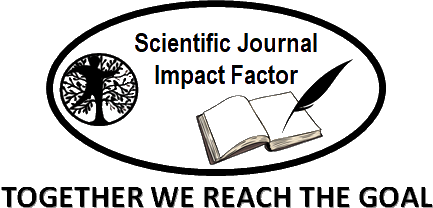Exploring EFL Teachers’ Use of Media and Applications During Covid-19 Pandemic
Abstract
The Covid 19 Pandemic has affected the learning system in Indonesia. Teaching that was originally face-to-face in schools turned into distance learning using online-based media and applications. The sudden change caused a cultural shock to teachers, students, and parents of students. Economic disparities are very visible to students in Larangan District, Brebes Regency, where the majority of parents are farmers with low incomes. Therefore, this study aims to 1) describe teachers' use of media and online applications during the teaching-learning process in a pandemic situation 2) identify the students' responses in the online teaching-learning process during the pandemic situation 3) identify the difficulties and problems faced by teachers and students during a teaching-learning process in a pandemic situation.To achieve the objectives of this study using a mixed method with informants 14 English teacher participants, eight school principals from eight junior high schools in Larangan District, Brebes Regency, Central Java, and a sample of 96 students who took part in English lessons during the Covid-19 Pandemic. Data collection was carried out through questionnaires and in-depth interviews. The results of the questionnaire were analyzed using descriptive and inferential statistics and the results of the interviews were analyzed by making transcripts, codes, and describing the results of the findings. The findings show that 1) Middle school English teachers in Larangan District, Brebes Regency had a low level of use of EFL applications and learning media during the pandemic. 2) The response of students in the teaching and learning process during the Covid 19 Pandemic was not enthusiastic and unenthusiastic 3) The difficulties faced by teachers and students during the Covid 19 Pandemic were problems with signal limitations and low parents economy. It can be concluded that the use of online learning media and applications by teachers of EFL in the Larangan District has not been used optimally.
Keywords
Full Text:
PDFReferences
Allen, E., Seaman, J. Garret, R. (2007). Blending in the Extent and Promise of Blended Education in the United States. Needham, Massachusetts: Sloan Consortium. Published 2007 Printed in the United States of America
Al-Maqbali, A. H., & Raja Hussain, R. (2022). The impact of online assessment challenges on assessmentprinciples during COVID-19 in Oman. Journal of University Teaching & Learning Practice, 19(2), 73-92 https://doi.org/10.53761/1.19.2.6
Bonk, C. J., & Graham, C. R. (Eds.). 2006. Handbook of blended learning: global perspectives, local designs. San Francisco. Pfeiffer Publishing
Creswell, J. W. (2013). Steps in conducting a scholarly mixed methods study
Creswell, J. W., & Plano Clark, V. L. (2011). Designing and conducting mixed methods research (2nd ed.). Thousand Oaks, CA: Sage.
Creswell, J.W. (2012). Educational research: planning, conducting, and evaluating quantitative and qualitative research.. 4th. Pearson: Boston
C. J., & Graham, C. R . (2005). Handbook of blended learning: global perspectives, local designs. Pfeiffer Publishing.
Dhawan, S. (2020). Online learning: A panacea in the time of COVID-19 crises. Journal of Educational Technology, 49(1), 5–22. https://doi.org/10.1177/0047239520934018
Doucet, A., Netolicky, D., Timmers, K., & Tuscano, F. J. (2020). Thinking about pedagogy in an unfolding pandemic (An Independent Report on Approaches to Distance Learning during COVID-19 School Closure). Work of Education International and UNESCO. https://issuu.com/educationinternational/docs/2020_research_covid-19_eng
Du Plessis P., and Mestry R.. 2019. ‘Teachers for Rural Schools: A Challenge for South Africa’. South African Journal of Education 39 (1): 1–7.
Staffing and Retention Challenges of Teachers in Rural Schools of Eswatini: The Case of the Lubombo Region Jonathan Dlamini, Ambrosé Ray Du Plessis https://orcid.org/0000-0001-7935-7341 DuPlessisAR@ufs.ac.za, and Lyle MarkhamView all authors and affiliations https://doi.org/10.1177/09730052221084767
Fanani, M. Z . (2018) . Strategi Pengembangan Soal Hots Pada Kurikulum 2013. Edudeena Journal of Islamic Religious Education, 2(1).
Greenstone, M., & Nigam, V. (2020). Does Social Distancing Matter ? University of Chicago - Department of Economics;) . Becker Friedman Institute for Economics Working Paper
Series, (26). https://doi.org/https://dx.doi.org/10.2139/ssrn.3561244
Hanafi, H., Adu, L., & Muzakkir. (2018). Profesionalisme Guru dalam Pengelolaan KegiatanPembelajaran di Sekolah (1st ed.). Yogyakarta: Deepublish. https://kbbi.kemdikbud.go.id/entri/strategi
Hayati, N. 2018. Pengelolaan Pembelajaran Melalui Blanded Learning Dalam Meningkatkan Receptive Skill Peserta Didik di Pondok Pesantren. Palapa. Jurnal Studi Keislaman dan Ilmu Pendidikan. 6 (2) : 1-18
Idriss, H. 2011. Pembelajaran Model Blended Learning. Jurnal Iqra’, 5(1): 61- 73
Kemendikbud. (2020). Kamus Besar Bahasa Indonesia Daring. Retrieved April 28, 2020,
Louis, C., Lawrence, M & Keith , M (2007) . Research Methods in Education Sixth edition , ISBN 0-203-02905-4 Master e-book ISBN . Routledge Press.
Lee Y., Shu S., L, Kalaivani, R . Implementation of Online Home-Based Learning and Students’ Engagement During the COVID-19 Pandemic: A Case Study of Singapore Mathematics Teachers . https://doi.org/10.1007/s40299-021-00572-y
Mabuan, R., & Ebron, G. 2016. Blended Learning Approach to Teaching Writing: Using E-mail in the ESL Classroom. Prosiding DLSU Research, Vol 4. McCall, H. 2017. Using
microblogs on Facebook to develop students’ academic reading and writing skills :University of Sydney Papers in TESOL .12, 123-162.
Miles, M. B., Huberman, A. M., & Saldaña, J. (2014). Qualitative data analysis: A methods sourcebook. 3rd.
Osguthorpe, R.T. & Graham, C.R. (2003). Blended Learning Environments: Definitions and Directions. Quarterly Review of Distance Education .4(3), 227.
Purnawarwan, P., Susilawati, & Sundayana, W. (2016) . The Use of Edmodo in Teaching Writing in a Blended Learning Setting.
Rahman, A.M.A. (2018). English Writing Performance Using Blended
Learning in TVET Education. Language Literacy, 2 (1) : 28-36
Rusdiana, A., Sulhan, M., Zaenal, I., & Ahmad, A. U. (2020). Penerapan Model POE2WE Berbasis Blended Learning Google Classroom Pada Pembelajaran Masa WFH Pandemic Covid-19. Digital Library Jorunal.
Schmeck, R. R. (Ed.). (1988). Learning Strategies and Learning Styles (1st ed.). New York: Plenum Press. https://doi.org/10.1007/978-1-4899-2118-5
Syah, Muhibbin, (2015), Psikologi Belajar, (Jakarta: Rajawali Press).
Sumitra , P. & Roshan , C. A Literature Review on Impact of COVID-19
Pandemic on Teaching and Learning . (2021). Higher Education for the Future . 8(1) 133–141. DOI: 10.1177/2347631120983481 . journals.sagepub.com/home/hef.
Tandoh, K., Flis, N., & Blankson, J. (2014). Blended Learning: History, Implementation, Benefits, and Challenges in Higher Education. Hershey . PA: IGI-Global
Purwanto, A., Pramono, R., Asbari, M., Hyun, C. C., Wijayanti, L. M., Putri, R. S., &
Santoso, P. B. (2020). Studi Eksploratif Dampak Pandemi COVID-19 Terhadap Proses Pembelajaran Online di Sekolah Dasar. EduPsyCouns: Journal of Education, Psychology and Counseling, 2(1), 1–12. Retrieved from https://ummaspul.e journal.id/Edupsycouns/article/view/397
Subedi, S., Nayaju, S., Subedi, S., Shah, S. K., & Shah, J. M. (2020). Impact of e- learning during COVID-19 pandemic among nurshing students and teachers of Nepal. International Journal of Science and Healthcare Research, 5(3), 9.
Sintema, E. J. (2020, April 7). Effect of COVID-19 on the performance of grade 12 students: Implications for STEM education. EURASIA . Journal of Mathematics, Science and Technology Education, 16(7). https://doi.org /10.29333/ejmste/7893
United Nations. (2020). Policy brief: Education during COVID-19 and beyond.
United Nations. https://www.un.org/development/desa/dspd/wp-content/uploads/ sites/22/2020/08/sg_policy_brief_covid-19_and_education_august_2020.pdf
O’Malley, J. M., & Chamot, A. U. (1995). Learning Strategies in Second Language
Acquisition. New York: Cambridge University Press.
Platsidou, M., & Athena, S. (2014). Exploring relationships with grade level , gender and language proficiency in the foreign language learning strategy use of children and early adolescents Exploring relationships with grade level , gender and language proficiency in the foreign language . International Journal of Research Studies in Language Learning . https://doi.org/10.5861/ijrsll.2014.778
Wahyu Aji Fatma Dewi .(2020). Dampak Covid-19 Terhadap Implementasi Pembelajaran Daring Di Sekolah Dasar . Jurnal Ilmu Pendidikan 2(1).
Yingwen, S., & Jian, S. 2016. A Study of Appreciation Resources In Teacher
Feedback In The Chinese College EFL Context. Learning in and beyond the Classroom: Ubiquity in Foreign Language Education, The Seventh CLS International Conference CLaSIC 2016, 443-459. Retrieved from https://www.fas.nus.edu.sg/cls/
DOI: http://dx.doi.org/10.18415/ijmmu.v12i9.7057
Refbacks
- There are currently no refbacks.
Copyright (c) 2025 International Journal of Multicultural and Multireligious Understanding

This work is licensed under a Creative Commons Attribution-NonCommercial-NoDerivatives 4.0 International License.
https://ijmmu.com
editor@ijmmu.com
facebook.com/ijmmu
Copyright © 2014-2018 IJMMU. All rights reserved.






